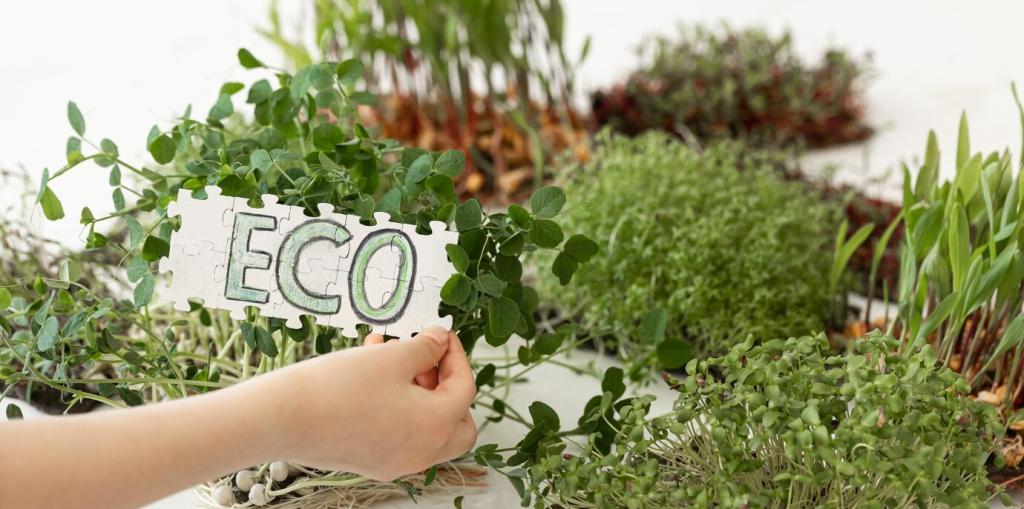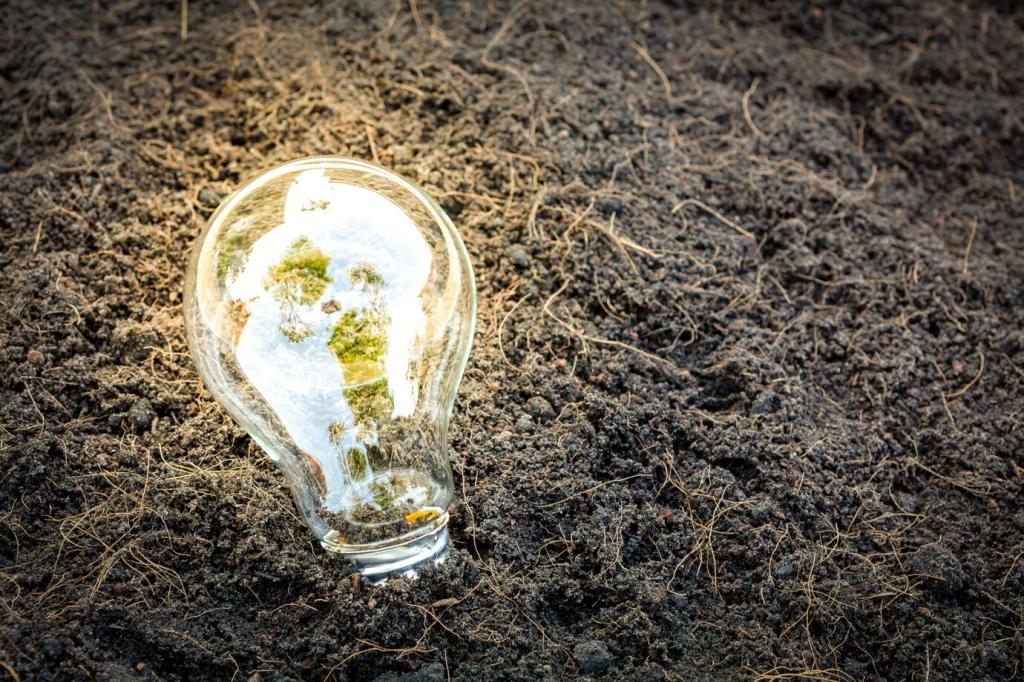The future of interior design is being redefined by innovative materials committed to eco-friendly practices. Homeowners, designers, and architects are increasingly turning to solutions that reduce environmental impact without compromising on aesthetics or functionality. These advancements not only protect the planet but also enhance indoor air quality and contribute to healthier living spaces. This page explores the diverse range of sustainable materials revolutionizing interior environments, illustrating how forward-thinking approaches can beautifully merge style and sustainability.
Sustainable Flooring Options
Bamboo flooring is celebrated for its rapid renewability, reaching maturity in just a few years compared to decades for traditional hardwoods. Its natural strength and hardness make it suitable for high-traffic areas while its unique grain patterns add an organic beauty to interiors. Bamboo is produced with minimal pesticides and fertilizers, further reducing its environmental footprint. Advances in manufacturing have improved its moisture resistance and color variety, making it a versatile, low-impact solution for eco-conscious interiors.

Low-Impact Paints and Finishes
Plant-Based Paints: Clean Beauty on Walls
Plant-based paints utilize natural oils, resins, and pigments derived from renewable sources. Without the harsh chemicals found in conventional products, these paints drastically minimize harmful VOC emissions, which are linked to respiratory issues and pollution. Their application results in vibrant, natural hues, often with unique matte or velvety sheens. Plant-based paints are becoming more durable and washable, proving that safety and style can go hand in hand for earth-friendly living spaces.
Water-Based Finishes: Protecting Without Pollution
Water-based finishes have largely replaced solvent-based options for sealing wood, stone, and other surfaces. By using water as the primary carrier, they drastically cut down on volatile organic compounds, making them safer to apply and healthier for inhabitants. These finishes dry quickly, minimize unpleasant odors, and offer impressive durability against wear and tear. Their clarity allows the intrinsic beauty of the underlying material to shine through, making them a favored choice for eco-minded designers.
Clay and Lime Plasters: Natural Wall Treatments
Clay and lime plasters are time-honored wall treatments experiencing a modern revival for their beauty and eco-friendly attributes. Extracted directly from the earth and processed with minimal intervention, these materials are fully biodegradable. Their natural breathability helps regulate indoor humidity, contributing to healthier interiors. With subtle color variations and soft textures, clay and lime plasters impart a sense of warmth and tranquility to contemporary spaces.
Bio-Based Surfaces and Worktops

Recycled Paper Composite: Strong Yet Sustainable
Countertops made from recycled paper composite are both lightweight and strong, combining post-consumer paper fibers with non-toxic resins. The result is a dense, highly durable surface that resists stains, heat, and scratches. These worktops display a soft, matte finish and are offered in a variety of naturalized colors, suitable for everything from minimalist kitchens to modern bathrooms. Choosing recycled paper composites helps reduce waste streams while offering a unique aesthetic that stands apart.

Bioglass: Translucent and Tactile
Bioglass surfaces are crafted entirely from recycled glass, fused into a smooth, durable material reminiscent of stone. Each slab sparkles subtly with embedded glass fragments and is available in a spectrum of colors, from icy whites to lush sea greens. Bioglass is non-porous and low-maintenance, making it ideal for kitchen islands, bathrooms, or decorative wall panels. Utilizing post-consumer glass in this way closes the loop on one of the most commonly discarded materials.

Terrazzo with Recycled Aggregates: Artful Eco-Statement
Terrazzo, a composite material traditionally made from marble chips, now incorporates recycled glass, ceramics, and even metals for contemporary, eco-friendly flair. Manufacturers use low-VOC binders to further enhance sustainability. Each terrazzo surface is one-of-a-kind, reflecting its mix of recycled components in intricate, vibrant patterns. This classic material is both fashionable and functional, ideally suited for flooring, countertops, and accent walls that honor circular design principles.

Organic Cotton: Purity and Performance
Organic cotton is cultivated without synthetic pesticides or fertilizers, preserving soil health and protecting water sources. It is exceptionally soft, hypoallergenic, and durable—making it ideal for upholstery, bedding, and draperies. The production process relies on natural farming techniques, resulting in a fabric that is both biodegradable and resilient. Organic cotton holds vibrant dyes well, enabling designers to introduce rich, toxin-free color to interior spaces.
Hemp: Historic Fiber, Modern Marvel
Hemp is one of the oldest cultivated fibers, yet its relevance has only increased in the age of sustainability. Hemp grows rapidly, requires little water, and naturally resists pests. Its fibers can be woven into fabrics that are both strong and breathable, perfect for cushions, curtains, and rugs. Hemp textiles age gracefully, becoming softer with use, and offer a subtle, earthy texture that complements a range of decor schemes.
Recycled Polyester: Circular Innovation
Recycled polyester, often derived from discarded plastic bottles, extends the lifecycle of non-biodegradable materials while reducing landfill burdens. Advanced recycling techniques yield high-quality yarns suitable for everything from plush carpets to durable upholstery. These textiles offer performance benefits, such as stain resistance and fade durability, and can be engineered to feel soft or structured depending on the application, all while supporting a more circular textile economy.
Previous slide
Next slide
Smart Insulation Choices
Sheep’s wool insulation is prized for its ability to keep interiors warm in the winter and cool in the summer via natural moisture-wicking and breathability. It is easy to install, safe to handle, and fully compostable at the end of its life cycle. The unique structure of wool fibers traps air and adjusts to humidity, providing consistent thermal and acoustic performance. As a renewable, rapidly regenerating resource, wool plays a notable role in energy-efficient, earth-conscious design.
Advanced Glass for Health and Efficiency
Low-E Glass: Managing Light and Heat
Low-emissivity (Low-E) glass is coated with an ultra-thin metal oxide layer that reflects infrared heat while allowing natural light to enter. This technology helps maintain consistent indoor temperatures by reducing thermal transfer, thereby lowering reliance on artificial heating and cooling systems. Low-E glass not only contributes significantly to energy efficiency, but also protects interior furnishings from fading due to UV exposure, adding both function and sustainability to glazing solutions.

